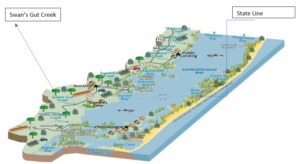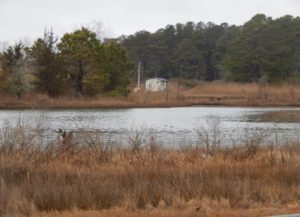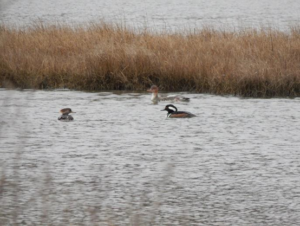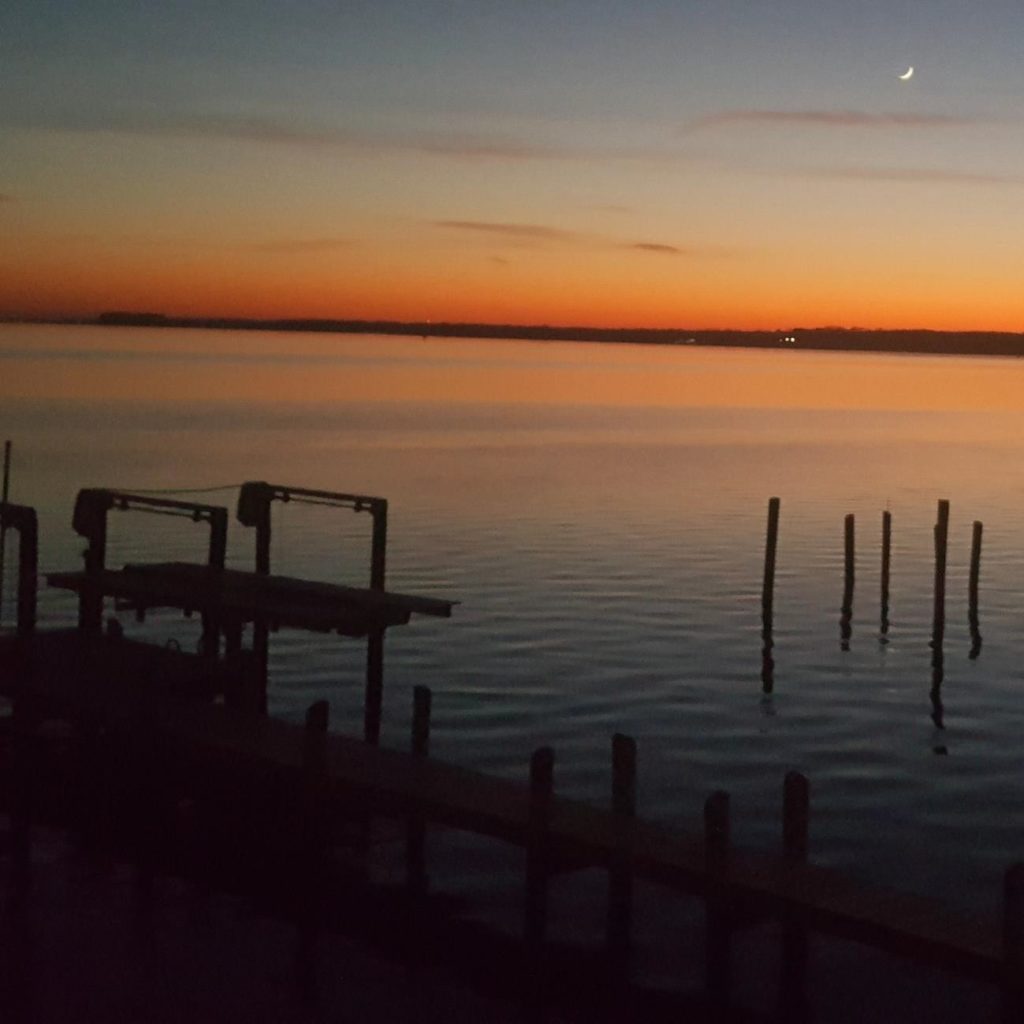Off the beaten path of Virginia’s Eastern Shore
Author: Lisa Wu, Virginia Certified Ecotour Guide
The Eastern Shore is within three hours’ drive of at least a quarter of the country’s population. You can’t get there without crossing saltwater. To many in Northern Virginia, the Eastern Shore brings to mind the beaches of spring and summer breaks, the gathering of friends for volleyball, the thrill of a roller coaster and the taste of funnel cakes and deep-fried lemonade with ocean waves lapping in the background.
I can’t cross Chesapeake or Delaware Bay without remembering the many trips that initially called me to the shore. It’s not that I don’t like mountains, but my explorations began with leading students in marine and AP Biology to sites along the Delaware Bay and later overnight trips to the Chincoteague Bay Field Station. These were opportunities to examine barrier island ecology, from salt marshes through maritime forests and freshwater wetlands, to the dunes and beaches. From finding whale bones to seining pufferfish, each exploration yielded different discoveries, inspired research projects and stimulated new questions to pursue the next year.

 Now, my trips are without students and my calling is to explore the off the beaten paths of the Eastern Shore of Virginia, the same area I was introduced to long ago but never had the chance to explore on my own when overseeing dozens of students in the field. One location I recently uncovered is Swan’s Gut, one of only two tributaries that brings fresh water into Chincoteague Bay.
Now, my trips are without students and my calling is to explore the off the beaten paths of the Eastern Shore of Virginia, the same area I was introduced to long ago but never had the chance to explore on my own when overseeing dozens of students in the field. One location I recently uncovered is Swan’s Gut, one of only two tributaries that brings fresh water into Chincoteague Bay.

Travelling from Northern Virginia, habit draws me across the Bay Bridge onto route 50 East as most would navigate if travelling to the well-known beaches of Rehoboth, Bethany, and Ocean City. But if you continue south you’ll find yourself leaving the boardwalks, Ferris wheels, outlet malls, and passing into a quieter, more rural feel of the Eastern Shore. I was alerted to the existence of Swan’s Gut while traveling on the rural State Line Road – imaginatively named because Virginia is on one side of the road and Maryland borders the other.
Islanded from the rest of Virginia by Maryland on the north and the Chesapeake Bay to the west and south, the Eastern Shore of Virginia is the southernmost part of the Delmarva Peninsula and the most eastern physiographic region of the five that make up the Commonwealth. Creeks, guts, rivers, and inlets cut the peninsula on both the Chesapeake bayside and the Atlantic seaside subdividing the land into an endless maze. A tidal creek, Swan’s Gut, is located just 4.5 miles across the Bay from Chincoteague, in northern Accomack County which is one of only two counties on Virginia’s Eastern Shore. Beginning at Big Mill Pond in Maryland, it flows across the state line to Virginia through old farms, waterfront homes, and is bordered by saltmarshes, wetlands, and hardwood forest before emptying into Chincoteague Bay.

This gut or creek has the important function of conveying nutrients from the uplands and marshes and of providing fresh water to Chincoteague Bay. The tidal fluctuation of the creek maintains the productive marsh along its shores making it an effective filtering system which reduces the amount of siltation in the creek as well as Chincoteague Bay. (Fig. 7) Navigable by kayaks and canoes, the overlap of these differing natural systems of marsh and creek fosters extraordinary biodiversity and abundance of wildlife.
For tidal creeks, paddlers usually try to take advantage of the rising tide as they paddle toward the headwaters up the creek. Then return with the ebb tide. But here the tidal range is only about 1.3 feet and Swan’s Gut is wide and the terrain on either side is flat and low profile. However, moving up the creek from the mouth on Chincoteague Bay, the water changes from salty to brackish to fresh in part depending upon whether it has been rainy or dry. There will be a point at which you will feel more of the downstream flow of freshwater as the creek drains the watershed toward the Bay. As salinity changes, so do the communities of plants, animals, and birds. Saltwater plants such as Sparitina, and Salicornia will give way to black needlerush, sea oxeye, fleabane, rose mallow, marsh hibiscus, cattails, and pickerelweed. The marshes vary from salt to almost fresh and contain numerous ponds. muskrats, shore birds, and dabbling ducks are frequent visitors. The southeastern section is heavily vegetated with loblolly pine and an understory of holly (changing to wax-myrtle and salt tolerant shrubs along the marsh edge). There are several open areas of pasture land with scattered pines. In places, vegetation consists primarily of scattered open grown oaks and hickories surrounded by ponds.


Marshlands such as those found along Swan’s Gut serve a complex and unique role in providing productive fish and wildlife habitat, and in influencing the productivity of Chincoteague Bay and the surrounding ecosystem. These marshes are organic factories, traps for sediments, reservoirs for nutrients and other chemicals, and provide a productive and essential habitat for a large number of invertebrates, fish, reptiles, birds, and mammals.

For birders, expect to see bald eagles, egrets, ducks, gulls, and thousands of migrating birds. Species most commonly associated with the area marsh lands are the black duck, blue-winged teal, green-winged teal, mallard, gadwall, widgeon, pintail, shoveler, wood duck, great blue heron, snowy egret, common egret, and numerous species of songbirds. More than 320 species of birds are known to use this area regularly during migration and it has at least 100 species of birds present at any given time.
What’s beneath the boat? In a tidal creek expect to find black seabass, striped bass, summer flounder, and weakfish. Don’t be surprised if you see a fisherman on the banks gigging the marshes for frogs! The waters in marshlands serve as nurseries for many commercial fish during their juvenile phase. The mud on the bottom is critical for many invertebrates such as crabs, clams and worms.
Find a paddle friendly launch site
Sound like the type of adventure you would like to experience but need a paddle friendly place to stay for a few days? I have just the place for you. I should know — it’s my home.

Cove’s Point is built over Chincoteague Bay facing the Assateague Lighthouse and there is a long dock that is easy to launch from. Head out to the east and turn south — it’s just a short paddle on the Bay to the mouth of Swan’s Gut.
Following your exploration, you may need to refuel, so paddle back past Cove’s Point, toward the ocean (watch out for dolphins!) and head up the canal to the fishing village of Greenbackville where you’ll find a marina, a place to disembark, and join the locals for a delicious meal at the Crusty Crab Seafood Shack. You’ll be hooked on the rustic charm and fresh seafood!
Shellfish harvesting has been a lifeblood of the local economy for hundreds of years. But if you would rather harvest your own crabs, oysters, clams, and cook back at the house, it’s a Bay breeze with my well stocked kitchen and local cookbooks. Order and pick up fresh, local, seafood to take out at Susan’s Seafood or if you wander into the town of Chincoteague look for Gary Howard Seafood on Deep Hole Road. Enjoy dinner on the sunporch or on the dock under the stars.

For me, this is just the beginning of my exploration of Virginia’s Eastern Shore. Whether viewed through binoculars, a camera lens, or a mask and snorkel, watching wildlife here is to experience some of the rarest animals and most beautiful habitats on the Eastern Seaboard of our continent!
And who knew, life on the edge and the road less travelled may be closer than you think.
Visit the Virginia Oyster Trail website VOT for inspiration and trip planning. With an interactive map, you’ll be able to map your route, find the perfect place to stay as well as a wealth of local sites to visit. From artists and museums, historic tours to nature trails, there is something for everyone!
Recommended Books and Resources from the Author
Salt Tide Currents of Nature on the Virginia Coast, Curtis J. Badger
Off 13: The Eastern Shore of Virginia Guide Book, Kirk Mariner
Virginia Bird and Wildlife Trail Coastal Trail, Virginia Department of Wildlife Resources
Species List for Chincoteague and Wallops Species List
The Nature Conservancy
